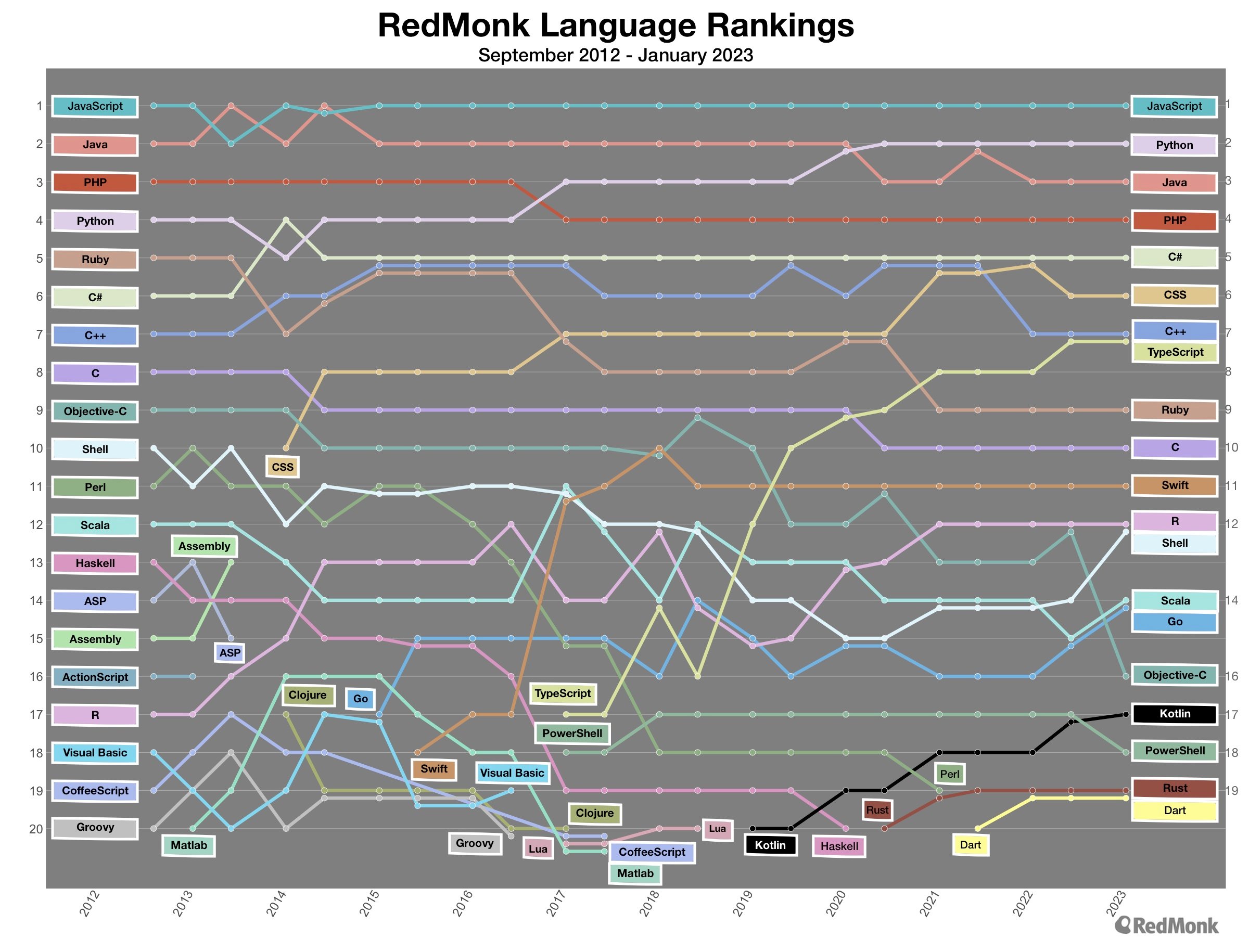
Analyst firm RedMonk has just updated its long-term rankings of the world’s most popular programming languages. There aren’t many surprises here—older and much-used languages such as Java, JavaScript and Python maintain their dominance—but it’s always worth looking at those smaller languages steadily gaining ground every year:

To rank the various languages, RedMonk analyzes GitHub pull requests and Stack Overflow discussion (there’s a lengthy description of their methodology on their website). As you can see from the above chart, a handful of newer languages have enjoyed a notable uptick in adoption over the past few years, including:
Kotlin: Once Google declared it a “first class” programming language for Android development, Kotlin’s usage inevitably rose. It’s been repeatedly named one of the most-loved languages on Stack Overflow’s annual Developer Survey, and many developers prefer it to Java, the language it was designed to supersede.
Dart: Clean and intuitive, and designed to allow developers to quickly spin up software on a variety of platforms, Dart has enjoyed a rise in usage. Although it doesn’t have the same footprint as TypeScript, Kotlin, or other newer languages, it has every chance of gaining new fans in coming years.
Go: Birthed at Google, Go (or “Golang”) is increasingly popular thanks to features such as garbage collection and concurrency that developers want and expect in more modern languages. For those interested in exploring Go’s capabilities, visit its dedicated website, which offers downloads, tutorials, documentation, and a browser-based “playground” for writing code.
TypeScript: Technically a superset of JavaScript, TypeScript has gained popularity thanks to its reliability and features like static typing. If you want to play around with it, v5.1 beta is now out.
Swift: Apple launched Swift in 2014, positioning it as a replacement for Objective-C, the longtime language for Apple software development. Swift enjoyed rapid adoption over the next several years, although RedMonk’s chart suggests it began to level off around 2018. Nonetheless, given the size of Apple’s software ecosystem, it seems likely that the language will only continue to gain users in coming years, especially as it adds new features.
Although studying older and ultra-popular languages such as Python and JavaScript can always prove useful, keep an eye on up-and-coming languages such as Swift and TypeScript; those could easily become even more popular in years to come—opening up new job opportunities in the process.


